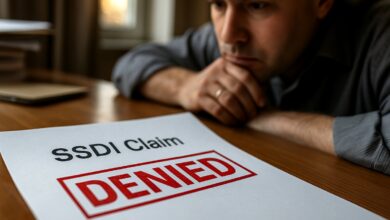Workplace Bullying Law in South Australia
This article explores the intricacies of the Workplace Bullying Law in South Australia, covering its legal foundations, definitions, remedies, and practical steps.

Workplace bullying is a pervasive issue that can have severe consequences for employees, employers, and the overall workplace environment. In South Australia, the Workplace Bullying Law provides a robust framework to address this problem, ensuring that workers are protected from harmful behaviors that jeopardize their health and safety. This article explores the intricacies of the Workplace Bullying Law in South Australia, covering its legal foundations, definitions, remedies, and practical steps for both employees and employers. By understanding the Workplace Bullying Law, individuals and organizations can foster safer, more respectful workplaces.
What Is Workplace Bullying?
Workplace bullying is defined as repeated, unreasonable behavior directed toward an employee or group of employees that creates a risk to their health and safety. The Workplace Bullying Law in South Australia recognizes bullying as a serious workplace hazard that can lead to physical, psychological, and emotional harm. Examples of bullying behaviors include:
- Verbal abuse, such as yelling or humiliating comments
- Spreading malicious rumors or gossip
- Excluding or isolating employees from workplace activities
- Setting unrealistic deadlines or excessive workloads
- Undermining an employee’s work through constant criticism
These behaviors, when persistent, fall under the scope of the Workplace Bullying Law, which aims to prevent and address such conduct in South Australian workplaces.
Legal Framework of Workplace Bullying Law in South Australia
The Workplace Bullying Law in South Australia is primarily governed by two key legislative frameworks: the Work Health and Safety Act 2012 (SA) and the Fair Work Act 2009 (Cth). Each framework provides distinct avenues for addressing workplace bullying, depending on the nature of the employment and the specific circumstances.
Work Health and Safety Act 2012 (SA)
The Work Health and Safety Act 2012 (SA) imposes a duty on employers to ensure a safe working environment free from risks to health and safety, including psychological risks caused by bullying. Under this act, workplace bullying is considered a psychosocial hazard that employers must eliminate or minimize as far as reasonably practicable. SafeWork SA, the state’s workplace health and safety regulator, enforces this legislation and provides guidance on complying with the Workplace Bullying Law.
Key obligations under the Work Health and Safety Act 2012 include:
- Identifying Hazards: Employers must proactively identify potential bullying behaviors in the workplace.
- Risk Assessment: Assessing the likelihood and impact of bullying on employee well-being.
- Implementing Controls: Introducing policies and procedures to prevent bullying, such as anti-bullying training and clear reporting mechanisms.
- Consultation: Engaging with employees to develop effective workplace bullying policies.
Failure to comply with these obligations can result in penalties, including fines, under the Workplace Bullying Law.
Fair Work Act 2009 (Cth)
For workers employed by constitutional corporations or the Commonwealth government, the Fair Work Act 2009 provides a specific anti-bullying jurisdiction. The Fair Work Commission (FWC) can handle complaints related to workplace bullying, offering remedies such as stop-bullying orders. The Workplace Bullying Law under this act applies to a broad range of workers, including employees, contractors, subcontractors, apprentices, trainees, and volunteers.
To make a claim under the Fair Work Act 2009, a worker must demonstrate that:
- The bullying behavior is repeated and unreasonable.
- The behavior creates a risk to health and safety.
- The worker is employed by a constitutionally covered business.
The FWC can issue orders to stop bullying but does not award compensation. However, the Workplace Bullying Law allows workers to seek other forms of redress, such as compensation for psychological injuries, through other legal avenues.
Equal Opportunity Act 1984 (SA)
The Equal Opportunity Act 1984 (SA) complements the Workplace Bullying Law by addressing bullying that involves discrimination based on protected attributes, such as sex, age, race, or disability. If bullying behavior constitutes discriminatory conduct, victims may seek remedies through Equal Opportunity SA, including compensation for lost wages or medical expenses under the Workers Rehabilitation and Compensation Act 1986 (SA).
Key Features of Workplace Bullying Law in South Australia
The Workplace Bullying Law in South Australia is designed to protect workers from harmful behaviors while holding employers accountable for maintaining safe workplaces. Below are the key features of this legal framework:
1. Definition of Workplace Bullying
Under the Workplace Bullying Law, bullying is characterized by:
- Repetition: The behavior must occur repeatedly, distinguishing it from one-off incidents.
- Unreasonableness: The conduct must be unreasonable, meaning it is not justified by legitimate management actions.
- Risk to Health and Safety: The behavior must pose a risk to the physical or psychological well-being of the targeted individual.
This definition ensures that the Workplace Bullying Law targets persistent, harmful behaviors rather than reasonable management actions, such as constructive feedback or disciplinary measures.
2. Broad Coverage of Workers
The Workplace Bullying Law in South Australia applies to a wide range of workers, not just employees. This includes contractors, subcontractors, volunteers, apprentices, and trainees. This broad coverage ensures that all individuals in a workplace are protected from bullying behaviors.
3. Remedies and Recourse
Victims of workplace bullying in South Australia have several options for seeking redress under the Workplace Bullying Law:
- SafeWork SA: Workers can lodge complaints with SafeWork SA, which can investigate and impose fines on employers who fail to address bullying. While SafeWork SA cannot issue stop-bullying orders, it can order compensation for discriminatory conduct related to health and safety issues.
- Fair Work Commission: For workers covered by the Fair Work Act 2009, the FWC can issue stop-bullying orders to prevent further harm.
- Equal Opportunity SA: If bullying involves discrimination, victims can pursue claims under the Equal Opportunity Act 1984.
- Workers Compensation: Employees who suffer psychological or physical injuries due to bullying may be eligible for compensation under the Workers Rehabilitation and Compensation Act 1986.
4. Criminal Sanctions for Severe Cases
In extreme cases, bullying behaviors that involve physical abuse or threats may violate criminal laws. The Workplace Bullying Law allows for criminal sanctions, including fines, to deter such conduct. This underscores the seriousness of workplace bullying as a legal and social issue.
Responsibilities of Employers Under Workplace Bullying Law
Employers in South Australia have a legal duty to prevent workplace bullying under the Workplace Bullying Law. This duty is rooted in both the Work Health and Safety Act 2012 and the Fair Work Act 2009. Failure to address bullying can result in legal consequences, including fines, compensation claims, and reputational damage.
Proactive Measures to Prevent Bullying
To comply with the Workplace Bullying Law, employers should take the following steps:
- Develop Anti-Bullying Policies: Create and promote a clear, written policy that defines bullying, outlines unacceptable behaviors, and establishes reporting procedures.
- Provide Training: Conduct regular training for employees, managers, and supervisors on recognizing and preventing bullying. This includes awareness of the Workplace Bullying Law and its implications.
- Encourage Reporting: Foster a workplace culture that encourages employees to report bullying without fear of retaliation.
- Monitor Workplace Dynamics: Regularly assess workplace relationships for signs of bullying, such as deteriorating team morale or increased absenteeism.
- Respond Promptly: Investigate complaints quickly, confidentially, and impartially, ensuring that appropriate action is taken to address bullying behaviors.
Reasonable Management Action
The Workplace Bullying Law distinguishes between bullying and reasonable management action. Examples of reasonable management actions include:
- Providing constructive feedback on performance
- Implementing disciplinary measures for misconduct
- Setting realistic performance goals or deadlines
These actions, when conducted fairly and transparently, do not constitute bullying under the Workplace Bullying Law. Employers must ensure that their management practices are reasonable to avoid misinterpretation.
Consequences of Workplace Bullying
Workplace bullying has far-reaching consequences for both individuals and organizations. The Workplace Bullying Law in South Australia aims to mitigate these impacts by providing legal protections and remedies.
Impact on Employees
Employees who experience bullying may suffer:
- Psychological Harm: Anxiety, depression, and low self-esteem are common outcomes of prolonged bullying.
- Physical Health Issues: Stress-related conditions, such as headaches or insomnia, can result from bullying.
- Reduced Productivity: Bullying can lead to decreased job satisfaction, absenteeism, and poor performance.
- Career Disruption: Victims may feel compelled to leave their jobs, resulting in financial and professional setbacks.
Impact on Organizations
For employers, workplace bullying can lead to:
- Financial Costs: Bullying is estimated to cost the Australian economy billions annually, with South Australian businesses facing significant losses due to litigation, sick leave, and reduced productivity.
- Reputational Damage: Failure to address bullying can harm an organization’s reputation, making it difficult to attract and retain talent.
- Legal Liabilities: Non-compliance with the Workplace Bullying Law can result in fines, compensation claims, and regulatory action.
How to Address Workplace Bullying: Steps for Employees
If you are experiencing workplace bullying in South Australia, the Workplace Bullying Law provides several avenues for recourse. Here’s a step-by-step guide:
- Document Incidents: Keep a detailed record of bullying behaviors, including dates, times, witnesses, and specific actions.
- Report to Your Employer: Lodge a formal complaint with your employer, following their anti-bullying policy. The Workplace Bullying Law emphasizes the importance of internal resolution as a first step.
- Contact SafeWork SA: If your employer fails to address the issue, you can lodge a complaint with SafeWork SA for investigation.
- Apply to the Fair Work Commission: For workers covered by the Fair Work Act 2009, you can apply for a stop-bullying order through the FWC.
- Seek Legal Advice: Consult a lawyer specializing in employment law to explore additional remedies, such as workers’ compensation or discrimination claims.
- Access Support Services: Organizations like Beyond Blue and the Australian Human Rights Commission offer resources and support for victims of workplace bullying.
Case Studies: Workplace Bullying in South Australia
To illustrate the application of the Workplace Bullying Law, consider the following hypothetical case studies:
Case Study 1: Verbal Abuse by a Manager
Sarah, an employee at a South Australian retail company, experienced repeated verbal abuse from her manager, who criticized her work in front of colleagues and set unattainable deadlines. Sarah documented the incidents and reported them to her employer’s HR department. When no action was taken, she lodged a complaint with SafeWork SA, which investigated and found the employer in breach of the Work Health and Safety Act 2012. The employer was fined, and Sarah pursued a workers’ compensation claim for psychological injuries under the Workplace Bullying Law.
Case Study 2: Exclusion and Gossip
John, a contractor at a construction firm, was consistently excluded from team meetings and subjected to malicious gossip by coworkers. He applied to the Fair Work Commission for a stop-bullying order under the Workplace Bullying Law. The FWC issued an order requiring the employer to implement anti-bullying training and monitor workplace behavior, effectively resolving the issue.
These cases highlight the practical application of the Workplace Bullying Law in South Australia and the importance of taking prompt action to address bullying.
Conclusion
The Workplace Bullying Law in South Australia provides a robust framework for addressing workplace bullying, protecting workers, and holding employers accountable. By understanding the legal provisions under the Work Health and Safety Act 2012, Fair Work Act 2009, and Equal Opportunity Act 1984, both employees and employers can take proactive steps to prevent and address bullying. Employers must implement anti-bullying policies, provide training, and foster a respectful workplace culture, while employees have access to multiple avenues for redress, including SafeWork SA, the Fair Work Commission, and workers’ compensation claims.
By adhering to the Workplace Bullying Law, South Australian workplaces can create safer, more inclusive environments that promote employee well-being and organizational success. If you or someone you know is experiencing workplace bullying, take action today by documenting incidents, reporting to your employer, and seeking legal advice if necessary.











